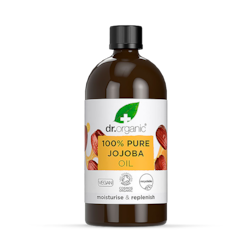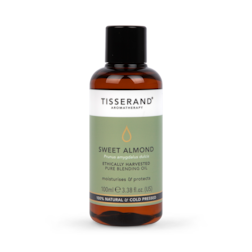15% off €30 or 20% off €40
Code:CHOOSE
The ultimate guide to massage oils

Post-gym pummel-down or a dreamy night for two? Get your hands on our top massage oils to suit the mood
Our top picks
Light and silky
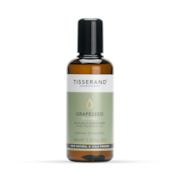
Tisserand
Tisserand Grapeseed Ethically Harvested Blending Oil 100ml
€6.55
Energising oil blend
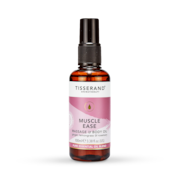
Tisserand
Tisserand Muscle Ease Massage & Body Oil 100ml
€10.50
Fragrant and moisturising
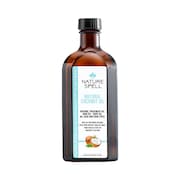
Nature Spell
Nature Spell Coconut Treatment Oil For Hair & Body 150ml
€10.40
A rough night’s sleep, a stressful shift or a particularly gruelling gym session... sound familiar?
Whether it’s your mind or your body that needs a quick break from the world, a massage is a great answer.
Even better? One with scented oils that soothe the senses, relax muscles, foster emotional intimacy and harness the power of aromatherapy.
Say goodbye to tension and hello to our top massage oils, but which one’s for you...
What are massage oils?
First, let’s start with essential oils. These are super-concentrated and potent, containing the scent of the plant they’re extracted from.1 Because they're so strong, they always need to be diluted before you use them.1
As well as smelling gorgeous, each essential oil is thought to have different beneficial properties, like helping you relax or making you feel more awake in the morning.
Massage oils are a blend of essential oils and carrier oils (a neutral oil used to dilute essential oils).
As essential oils are highly concentrated, they can cause irritation when applied directly to your skin.10 You can dilute essential oils with a carrier oil – something gentler and more neutral – to make them safe for use.
You can buy them pre-blended, but it’s easy to mix them yourself and it means you can make your own combos!
Choosing the right essential oils for your massage
It can be tricky to know where to start. Should you just pick a scent you like? Is there actually a difference?
For something more invigorating (think a post-gym session), go for uplifting fragrances like:
While you should definitely choose a scent you like (nobody wants a stinky bath), it’s important to think about the mood you want to evoke too.
For a soothing massage, choose essential oils for stress like:
For something more invigorating (think a post-gym session), go for uplifting fragrances like:
- peppermint: can awaken your senses 7
- eucalyptus: good for helping you breathe deeply 8,9
Our top massage oils for relaxation
Jojoba (pronounced ‘ho-ho-ba') is a non-greasy oil with a delicate, nutty scent that’s extracted from the seeds of the jojoba plant.11
This carrier oil absorbs easily into the skin and doesn’t clog your pores, making it useful for many different types of massages, facials or even bath oils. Even better, jojoba oil’s moisturising properties make it suitable for most skin types.
Just squeeze a little into a bowl. Then, add a few drops of essential oil and stir. Dim the lights and let the massage begin...
You can also use jojoba on its own to moisturise skin or as a leave-in hair oil.
This unscented oil comes from – you guessed it – the seeds of grapes. It’s also a byproduct of making wine. We’ll leave you to decide whether that means you should stock up on a bottle... Grapeseed oil has a light, silky texture that leaves your skin looking glossy with a healthy glow. It’s packed with vitamin E, plus linoleic acid (an omega-6 fatty acid) that works to keep skin looking healthy and plump.12
Lightweight and easily absorbed into the skin, it’s a fantastic base for blending with essential oils and is the perfect choice for any massage type. Its lighter consistency makes it a great choice for those with oilier skin too.
To use as a massage carrier oil, add five drops of essential oil to 10ml of grapeseed oil. Or enjoy a soothing scented bath by mixing four to six drops of essential oil with 20ml of grapeseed oil and swirl into the tub. Always patch test before use.
You might already have coconut oil at home – though chances are it’s in your kitchen cupboard instead.
Its light, non-greasy properties make coconut oil the perfect option for a smoothing, moisturising massage. Its medium-chain fatty acid content means it sinks easily into the skin and acts as a barrier to prevent moisture from escaping your skin.13 This makes it ideal for dry skin.14
You can use a special coconut oil-based hair and skin treatment like this one from Nature Spell. With added sweet almond oil, it’s ideal as an overnight hair mask, a super-nourishing moisturiser or a ready-made massage oil.
Or raid the cupboards and use your kitchen stuff (as long as it’s 100% coconut oil with no additives). Romantic dinner now, massage later...
Speaking of sweet almond oil, it’s also a great base thanks to its mild nature. It helps keep skin soft and works to prevent water loss from the skin.15
Mainly harvested from the Mediterranean, sweet almond oil is cold pressed from the seed kernels of the sweet almond tree.16 Close your eyes and imagine you’re there...
It’s suitable for most skin types but can leave the skin feeling a bit greasy – so a little goes a long way. You should also avoid using sweet almond oil if you or your massage recipient has a nut allergy.
Tisserand’s Sweet Almond Oil is ideal for face and body massage, helping to soften drier skin and working as a carrier oil for your favourite scents.
How to use massage oils safely
For a blissful and relaxing massage that doesn’t leave your skin irritated or sore, follow these tips...
- do a patch test: this is to check for an allergic reaction. Apply a small amount of oil to your inner elbow or behind your ear and wait for 24 hours to see if it leaves your skin feeling irritated
- avoid broken skin: or if it’s irritated or sunburned as this could lead to more discomfort
- always dilute your essential oils: essential oils are really concentrated and can cause irritation when used directly on the skin.1 Always dilute your essential oils correctly or, if in doubt, choose a pre-blended massage oil
- be aware of allergies: avoid using any oils that you may be allergic to (for example, if you have a nut allergy, don’t use almond oil)
- check with your GP if needed: if you have an existing medical condition, it's best to check that oils are suitable for you
Which carrier oil should I use for my skin type?
Though carrier oils are mild and neutral, they’re not one-size-fits-all. Some are greasier or thicker than others – what's nourishing for one person might be a little too much for another.
go for: rich, moisturising oils that replenish and nourish the skin
good choices: sweet almond oil, apricot kernel oil, avocado oil and rosehip oil are packed with fatty acids and vitamins that hydrate the skin
go for: lighter oils that absorb quickly
good choices: grapeseed oil, jojoba oil and hemp seed oil all help maintain the skin’s natural oil balance and won't leave your skin feeling greasy
go for: a mixture of oils – you can combine different ones to cater to different areas of your face or body
good choices: try jojoba oil on your T-zone and a richer oil like apricot kernel oil on drier cheeks
The final say
Found your massage match? The right oil creates a truly indulgent experience, so why not experiment and see which fits the mood?
Take five minutes to browse all our massage oils, discover our sports recovery tips or clear your mind right now with a breathwork expert...
This article provides informational advice and is not a substitute for medical care. Curated by experts for accuracy, we take great care to ensure the information is up-to-date and relevant. However, you should always consult your GP or healthcare professional before using supplements or alternative products, particularly if you have medical conditions or are under supervision.
1. Orchard A, van Vuuren SF. Carrier oils in dermatology. Archives of dermatological research [Internet]. 2019 Jul 18 [cited 2024 Jun 11]; 311(9): 653-72. Available from: https://pubmed.ncbi.nlm.nih.gov/31321504/
2. Garavaglia J, Markoski MM, Oliveira A, Marcadenti A. Grape Seed Oil Compounds: Biological and Chemical Actions for Health. Nutrition and metabolic insights [Internet]. 2016 Aug 16 [cited 2024 Jun 11]; 9: 59-64. Available from: https://www.ncbi.nlm.nih.gov/pmc/articles/PMC4988453/
3. Varma SR et al. In vitro anti-inflammatory and skin protective properties of Virgin coconut oil. Journal of Traditional and Complementary Medicine [Internet]. 2018 Jan 17 [cited 2024 Jun 11]; 9(1): 5-14. Available from: https://pubmed.ncbi.nlm.nih.gov/30671361/
4. Zeng YQ et al. Virgin coconut oil: A comprehensive review of antioxidant activity and mechanisms contributed by phenolic compounds. Critical Reviews in Food Science and Nutrition [Internet]. 2022 Aug 23 [cited 2024 Jun 11]; 1-24. Available from: https://pubmed.ncbi.nlm.nih.gov/35997296/
5. Zeichner. The Use of an Over-the-Counter Hand Cream with Sweet Almond Oil for the Treatment of Hand Dermatitis. Journal of Drugs in Dermatology [Internet]. 2018 Jan 1 [cited 2024 Jun 11]; 17(1). Available from: https://pubmed.ncbi.nlm.nih.gov/29320591/
6. Royal Horticultural Society (RHS). Prunus dulcis [Internet]. RHS [cited 2024 Jun 11]. Available from: https://www.rhs.org.uk/plants/13964/prunus-dulcis/details
7. Chumpitazi BP, Kearns GL, Shulman RJ. Review article: the physiological effects and safety of peppermint oil and its efficacy in irritable bowel syndrome and other functional disorders. Alimentary Pharmacology & Therapeutics [Internet]. 2018 Jan 26; 47(6): 738-52. Available from: https://pmc.ncbi.nlm.nih.gov/articles/PMC5814329/
8. Grajzer M et al. Characteristics and Antioxidant Potential of Cold-Pressed Oils - Possible Strategies to Improve Oil Stability. Foods [Internet]. 2020 Nov 8 [cited 2024 Jun 11]; 9(11): 1630. Available from: https://www.ncbi.nlm.nih.gov/pmc/articles/PMC7695170/
9. Angela Smith Lillehei, Halcón LL, Savik K, Reis R. Effect of Inhaled Lavender and Sleep Hygiene on Self-Reported Sleep Issues: A Randomized Controlled Trial. Journal of Alternative and Complementary Medicine [Internet]. 2015 Jul [cited 2024 Jun 11]; 21(7): 430–8. Available from: https://pubmed.ncbi.nlm.nih.gov/26133206/
10. Ezgi Karadag, Sevgin Samancioglu, Dilek Ozden, Bakir E. Effects of aromatherapy on sleep quality and anxiety of patients. Nursing in Critical Care [Internet]. 2015 Mar [cited 2024 Jun 11]; 22(2): 105-12. Available from: https://pubmed.ncbi.nlm.nih.gov/26211735/
11. Mohsen Adib-Hajbaghery, Seyedeh Nesa Mousavi. The effects of chamomile extract on sleep quality among elderly people: A clinical trial. Complementary Therapies in Medicine [Internet]. 2017 Dec [cited 2024 Jun 11]; 35: 109-14. Available from: https://www.sciencedirect.com/science/article/abs/pii/S0965229917302601?via%3Dihub
12. European Commission. Ingredient – LINOLEIC ACID [Internet]. European Commission [cited 2025 Jun 26]. Available from: https://ec.europa.eu/growth/tools-databases/cosing/details/77323
13. Watanabe E et al. Effects of Bergamot (Citrus bergamia (Risso) Wright & Arn.) Essential Oil Aromatherapy on Mood States, Parasympathetic Nervous System Activity, and Salivary Cortisol Levels in 41 Healthy Females. Complementary medicine research [Internet]. 2015 [cited 2024 Jun 11]; 22(1): 43-9. Available from: https://pubmed.ncbi.nlm.nih.gov/25824404/
14. Abbas Meamarbashi, Rajabi A. The effects of peppermint on exercise performance. Journal of the International Society of Sports Nutrition [Internet]. 2013 Mar 21 [cited 2024 Jun 11]; 10(1). Available from: https://pubmed.ncbi.nlm.nih.gov/23517650/
15. Dhakad AK, Pandey VV, Beg S, Rawat JM, Singh A. Biological, medicinal and toxicological significance of Eucalyptus leaf essential oil: a review. Journal of the Science of Food and Agriculture [Internet]. 2017 Feb [cited 2024 Jun 11]; 98(3): 833-48. Available from: https://pubmed.ncbi.nlm.nih.gov/28758221/
16. Smith A, Matthews O. Aromatic ointments for the common cold: what does the science say? Drugs in Context [Internet]. 2022 Aug 1 [cited 2024 Jun 11]; 11: 1–9. Available from: https://pubmed.ncbi.nlm.nih.gov/35975030/
17. US Department of Agriculture (USDA). Oil, sesame, salad or cooking [Internet]. USDA [cited 2025 Jun 26]. Available from: https://fdc.nal.usda.gov/food-details/171016/nutrients
18. European Commission. Ingredient – JOJOBA OIL PROPANEDIOL ESTERS [Internet]. European Commission [cited 2025 Jun 26]. Available from: https://ec.europa.eu/growth/tools-databases/cosing/details/98606

